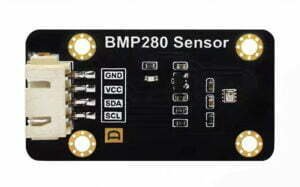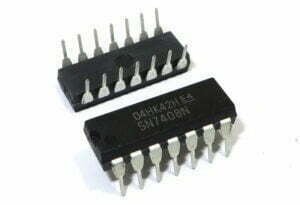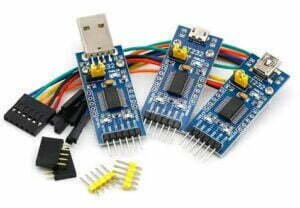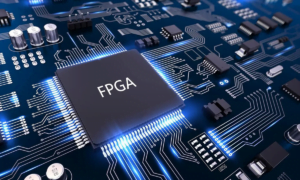Developing innovative electronic designs can be a challenging process, especially for beginner engineers. With the help of powerful microcontrollers such as the STMicroelectronics STM32F407IGT6, engineers can unlock their full potential and take their projects to the next level. This comprehensive guide will provide beginner engineers with an in-depth introduction to the STM32F407IGT6 microcontroller, teaching them how to configure its features and use it to its full capabilities. By the end of this guide, engineers will have a detailed understanding of the STM32F407IGT6 and be able to apply its features to the development of their projects.
About STM32F407IGT6
The STMicroelectronics STM32F407IGT6 chip is a powerful, high-performance processor, ideal for a wide range of applications. This microcontroller delivers the best performance with its Cortex M4 core, floating point unit, and FPU integration. The chip also has a 64KB RAM, 4KB EEPROM, and an integrated communication interface. With these features, the STM32F407IGT6 chip is able to process complex tasks quickly and accurately. Furthermore, the chip offers low power consumption and extended battery life so that it can be used in a variety of environments. All in all, the STM32F407IGT6 chip is an efficient, reliable microcontroller that can easily meet both commercial and industrial needs.
Feature Introduction
- ARM Cortex-M4 core with DSP and FPU;
- High-performance ART Accelerator;
- High speed bus interface;
- External memory interface;
- CRC calculation unit;
- True random number generator;
- Cryptographic acceleration for AES, SHA, PKA, and RNG;
- LCD-TFT and DMA controller;
- General purpose I/O ports;
- Digital peripherals with configurable input/outputs;
- USB 2.0 full-speed device and host/OTG controller;
- Ethernet MAC 10/100/1000 with dedicated DMA.
Performance Parameter
- 32-bit Arm Cortex-M4 processor;
- Operating frequency up to 168 MHz;
- 1 MB Flash and 196 KB SRAM memory;
- 12-bit ADC with 16 channels;
- Up to 14 timers;
- Up to 42 interrupts;
- Up to 4 I2C, 3 USART, and 2 SPI interfaces;
- Up to 3 12-bit DAC channels;
- 8 to 14-bit digital camera interface;
- USB 2.0 OTG controller with PHY;
- Operating voltage of 2.0 to 3.6V.
How to configure the STM32F407IGT6?
The first step in developing any project with the STM32F407IGT6 is configuring it. The STM32F407IGT6 can be configured using a variety of tools, including the ST-Link Utility, CubeMX, and the GCC-based IDE.
ST-Link Utility
The ST-Link Utility is the recommended configuration tool for the STM32F407IGT6. This tool allows engineers to configure the microcontroller’s features and upload code to it. The ST-Link Utility has a straightforward user interface and is easy to use. It also supports several other STM32 microcontrollers, making it a great tool to use if you have several different microcontrollers in your design.
CubeMX
Another popular configuration tool is CubeMX, which is a graphical configuration tool that engineers can use to configure the STM32F407IGT6. This tool is great for beginners; however, it is recommended that engineers use the ST-Link Utility if they have several microcontrollers in their designs.
GCC-based IDE
The last configuration tool engineers can use to configure the STM32F407IGT6 is a GCC-based IDE. This configuration tool uses a text editor to configure and upload code to the microcontroller. This configuration tool is suitable for engineers who are using the STM32F407IGT6 for their own use and don’t plan to share their code with others.
Programming the STM32F407IGT6
Once engineers have configured the STM32F407IGT6, they can begin programming it to perform the specific tasks associated with their project. Engineers can program the STM32F407IGT6 using one of three programming languages, including C++, Arduino, and HAL. These programming languages have different features that engineers can use to implement different parts of their project.
C++
C++ is a general-purpose language that engineers can use to implement control algorithms, communication protocols, and any other functionality associated with their project. C++ is a highly-customizable language that can be used to fit any functionality, making it an ideal language for microcontrollers.
Arduino
Arduino is a language that is specifically designed for electromechanical systems. It is great for prototyping simple systems using sensors and actuators.
HAL
HAL is a language designed specifically for STM32 microcontrollers. This language is great for implementing system-level functionality, including communication protocols, control algorithms, and other complex features of a project.
Understanding the STM32F407IGT6 peripherals
The STM32F407IGT6 microcontroller features several different peripherals that engineers can use to implement different features in their project. These peripherals include timers, analog comparators, communication protocols, and other specialized features designed to simplify the creation of complex designs.
Timers
Timers are specialized timing circuits that engineers can use to implement timing functions, such as polling. The STM32F407IGT6 features 16 different timers that engineers can use to implement different functions in their design.
Communication protocols
Communication protocols are specialized circuits that engineers can use to implement communication functions, such as transmitting data to another computer system. The STM32F407IGT6 features two different communication protocols that engineers can use to transmit data to other systems. The two communication protocols are the Universal Asynchronous Receiver/Transmitter (UART) and the Inter-Integrated Circuit (I2C). Both of these communication protocols are commonly used in digital systems; therefore, they are easy to implement and understand.
Example projects with the STM32F407IGT6
Engineers can use the STM32F407IGT6 microcontroller in a variety of projects. Some projects that engineers can create with the STM32F407IGT6 include home automation systems, digital cameras, and data acquisition systems.
Home automation systems
Home automation systems are great projects for beginner engineers who want to learn how to use the STM32F407IGT6. These systems use sensors to detect the environment around them, such as motion sensors, and use actuators to change the environment, such as lights.
Digital cameras
Digital cameras are also a common project for engineers to create with the STM32F407IGT6. These systems use sensors, such as image sensors, to detect light and change the amount of light it receives to take pictures.
Data acquisition systems
Engineers can also create data acquisition systems with the STM32F407IGT6. These systems use sensors to detect an event and then store the data associated with the event in memory.
Conclusion
The STM32F407IGT6 is a powerful microcontroller that engineers can use to construct a variety of digital systems. The STM32F407IGT6 is easy to configure, program, and use in digital designs, making it a great choice for beginner engineers. The STM32F407IGT6 features several different peripherals that engineers can use to implement different features in their project. These peripherals include timers, analog comparators, communication protocols, and other specialized features designed to simplify the creation of complex designs. The STM32F407IGT6 is a great microcontroller for beginner engineers who want to create easy-to-create and easy-to-use digital systems.






